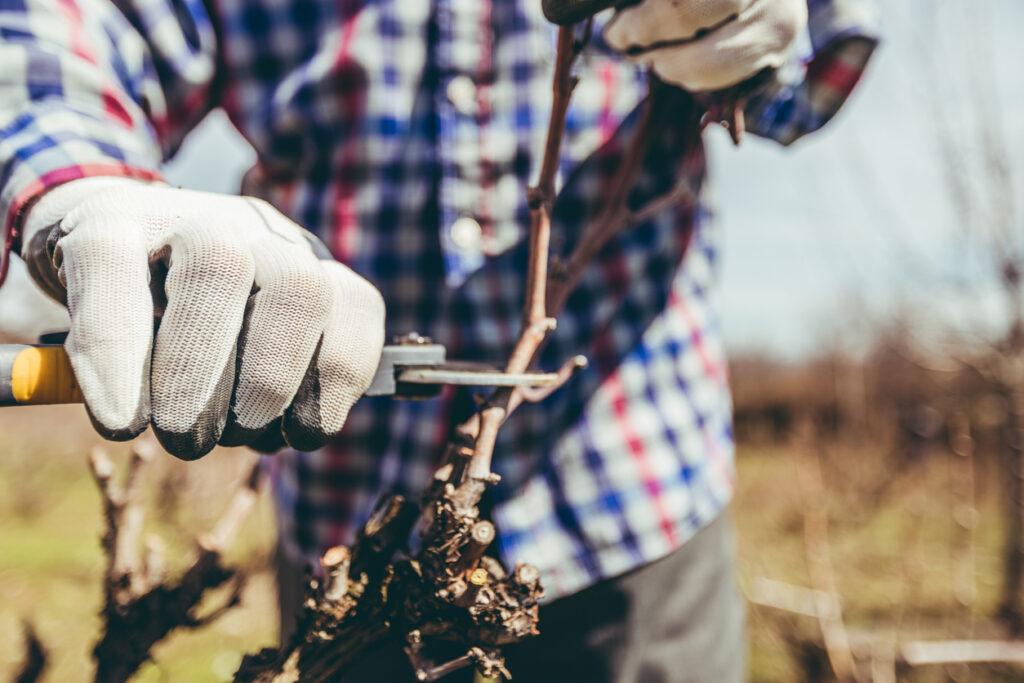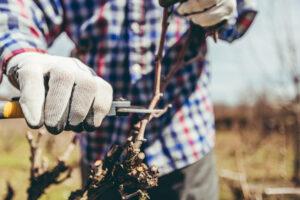Caring for Vines in the Winter: Why and What to Do

When winter settles in, and temperatures dip, a series of post-harvest changes begin to take place. All grapes’ varieties require upkeep, and learning how to care for and winterize is crucial to your vine’s health and productivity. Winter pruning in preparation for springtime budding is a delicate process and one of the most vital processes of vineyard management and post-harvest success.
This article looks at winter pruning measures you can take and the tools you’ll need to ensure your vines are ready for the next season.
Why Do You Prune Grapes After Harvest?
Grapevine pruning is essential during the dormant season after harvest. It determines the quality and quantity of your next crop.
Here are the reasons to prune grapevines after harvest:
1. Maintaining Vine Form
Grapevines are climbers with several adaptive mechanisms that enable tendrils to seek support. Pruning is essential to train the trellis support structure. It also allows the vines to retain a uniform shape yearly to facilitate viticultural operations.
2. Improving Fruit Quality and Production
A vine can only produce a given quantity and quality of fruit in a season. The capacity depends on the photosynthetic capacity and leaf surface area. Dormant pruning limits the number of leaves and shoots to enhance maximum crop production of high quality.
3. Regulating the Number and Positions of Shoots
Pruning regulates the vine’s shoots’ number, position, and cluster size and number by removing buds that would become new shoots with new clusters come spring.
4. Improving Bud Fruitfulness
Bud selection and placement simulate bud fruitfulness by selecting healthy vines with plump bubs exposed to sunlight. It ensures a plumper harvest in your next crop.
When Should You Do Winter Pruning?
Grapevine pruning should be done during the dormant season, any time after leaf fall, which occurs in late fall or winter. The grapevine’s vascular system is inactive and plugs up when the leaves fall. At this time, the leaves have already transferred the carbohydrates and minerals to the vine’s woody structures for winter storage.
Pruning before leaf fall affects the storage of minerals leading to poor bud formation, which affects the vine’s development and crop production in the next season.
Pruning timing in the dormant season is vital for how it affects the time of bud break. Vines pruned late in dormancy have a delay in bud break, which is desirable in frost-prone zones.
How Do You Prune Dormant Grapevines?
Pruning: dormant grapevines require severe pruning that sheds off 90% of the plant’s total growth to stimulate the development of new and fresh shoots. Take extreme care when winter pruning. Grapevines are hardy, unforgiving, and vigorous growers. In fact, any mistake made can only be corrected the following pruning season.
Here are some steps you might follow to prune dormant grapevines;
Sterilize your pruning tools.
Using a pruning saw, cut the main trunk to 4 feet tall at a 45-degree upward angle to remove diseases and dead or crowded wood.
Using looping or pruning shears, remove small and weak canes that have a small diameter, weak attachment, or show signs of cracks.
Remove canes older than two years, for they don’t produce fruits. To protect the cane from water, make the 45-degree upward angle cut.
Select two to four fresh fruiting canes from each grapevine and label them with bright fluorescent tape. Remove the largest and thickest canes with few buds and retain the thinnest buds that bear the most buds.
Prune the marked fruiting canes and leave about 15 buds on each cane.
Pluck unproductive shoots and shoots with less than 14 well-exposed leaves while spacing them evenly, and prune the remaining shoots to one leaf cluster each.

How to Prepare Vineyard for Dormancy
Vineyard dormancy preparations allow vines to rest, enhancing reproductive and shoot growth for the next season.
Insulation
Cover the grapevines with 8 inches of mounded soil for protection during winter. Add some mulch of straw or water-resistant shredded corn stalks in extremely cold regions to protect the vines.
Insect Pest Management
Sanitize all pruning and winter droppings to reduce pest levels as well as enhance disease control.
Disease Management
Vines are prone to crown gall, Phomopsis, black rot, and trunk diseases. Crown gall is devastating and widespread and has no synthetic treatment. Mount soil over the graft union to insulate the vines.
Vineyard Floor Management
Scout your vineyard and take note of the problematic weeds. Apply residual herbicides to control perennial weeds on the vineyard floors. At this time, grapevines are also less susceptible to herbicide exposure, for the vines are shedding leaves.
Vineyard Pruning Tools
For successful grapevine winter care, you’ll need a few vineyard management tools in your arsenal, including:
High-quality bypass and anvil grape pruning shears with a compatible holster for safekeeping
Sturdy garden loppers for clipping thicker and hard-to-reach woody stems
Folding hand saws for more aggressive cutting
Shearing knives to remove new growth from vines
Bright-colored fluorescent tape
Replacement parts such as blades, bumpers, and springs
Maintenance products like sharpening stones and blade sharpeners
Sturdy Gloves
Do you have the essential equipment and supplies to prepare your vineyard for winter? Give us a call or download our catalog. We are your one-stop vineyard supply shop and we are here to set you up for pruning success.
You can also connect with us today on Facebook, Twitter, LinkedIn, or Instagram. Our team is always on standby!
